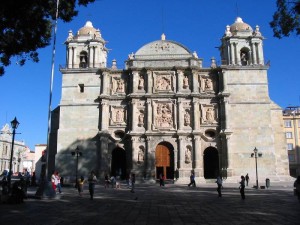 The city of Oaxaca is located in the southern region of Mexico and is the capital city of the state with the same name. In this city, tourists can admire the beautiful architecture of the buildings that adorn its historic center, declared World Heritage by UNESCO: the Cathedral, most important temple in the city, its construction began in 1535 and it was completed until 1574. Its facade has a baroque style with sculptures of Catholic saints that frame a beautiful relief in stone with the image of the Assumption of Mary. The Temple and ex-Convent of Santo Domingo de Guzman is considered one of the wonders of the city, it has ten chapels and a large dome decorated with 104 paintings of Dominican martyrs. The Constitution square has as main attraction the portals and a kiosk from the time of Porfirio Diaz in the XXth century. As well as the Basilica de la Soledad, the Macedonio Alcalá theatre, Government Palace, Alameda, among other magnificent colonial buildings.
The city of Oaxaca is located in the southern region of Mexico and is the capital city of the state with the same name. In this city, tourists can admire the beautiful architecture of the buildings that adorn its historic center, declared World Heritage by UNESCO: the Cathedral, most important temple in the city, its construction began in 1535 and it was completed until 1574. Its facade has a baroque style with sculptures of Catholic saints that frame a beautiful relief in stone with the image of the Assumption of Mary. The Temple and ex-Convent of Santo Domingo de Guzman is considered one of the wonders of the city, it has ten chapels and a large dome decorated with 104 paintings of Dominican martyrs. The Constitution square has as main attraction the portals and a kiosk from the time of Porfirio Diaz in the XXth century. As well as the Basilica de la Soledad, the Macedonio Alcalá theatre, Government Palace, Alameda, among other magnificent colonial buildings.
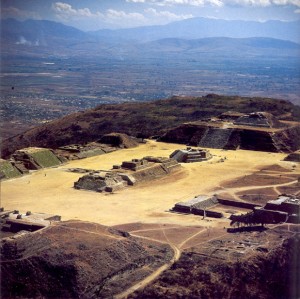 On the surroundings of the city, people can visit several archaeological sites. The most important are: Monte Alban, the most important indigenous capital in the valley region of Oaxaca, when it was inhabited by the Zapotec culture. After its abandonment around year 800, it was reoccupied by Mixtecs Indigenous who, reused several of the buildings to deposit there, the bodies and gifts of its dead leaders, this archaeological site was declared a World Heritage Site by UNESCO, on 1987.
On the surroundings of the city, people can visit several archaeological sites. The most important are: Monte Alban, the most important indigenous capital in the valley region of Oaxaca, when it was inhabited by the Zapotec culture. After its abandonment around year 800, it was reoccupied by Mixtecs Indigenous who, reused several of the buildings to deposit there, the bodies and gifts of its dead leaders, this archaeological site was declared a World Heritage Site by UNESCO, on 1987.
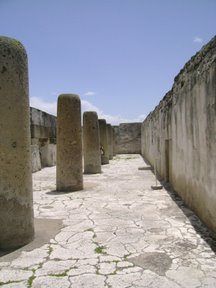
Mitla, one of the most important ceremonial centers of the Zapotec culture, which reached its heyday around 1200 a.C., it was also reoccupied by the Mixtecs, who reconstructed some of its most important buildings such as the Group of Columns, where is located the Great House of Pezelao, one of the most beautiful architectural ensembles of Mesoamerica, which is decorated with multiple squares that identify the architectural style of the Mixtec culture. Mitla in Nahuatl means Place of Deads.
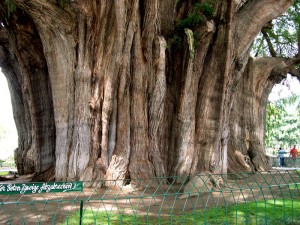 Tourists can also visit the town of Santa Maria del Tule, where people can admire the spectacular figure of the famous Tule Tree, a tree with the biggest trunk in the world, and the magnificent scenery of the Benito Juárez Park, with an area of 2.737 ha, which includes the Hill Fortin, ideal for camping while enjoying one of the best views of the City. As well as the Llano Grande Park, where it is possible also to camp and where tourists can enjoy incredible vegetation and admire the Pinavete waterfall, a waterfall of over 30 meters.
Tourists can also visit the town of Santa Maria del Tule, where people can admire the spectacular figure of the famous Tule Tree, a tree with the biggest trunk in the world, and the magnificent scenery of the Benito Juárez Park, with an area of 2.737 ha, which includes the Hill Fortin, ideal for camping while enjoying one of the best views of the City. As well as the Llano Grande Park, where it is possible also to camp and where tourists can enjoy incredible vegetation and admire the Pinavete waterfall, a waterfall of over 30 meters.
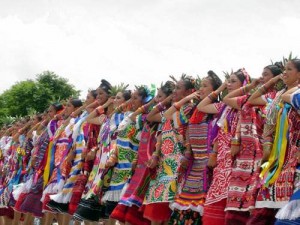
The city of Oaxaca has many festivals that reflect the tradition of more than 500 years of fusion between indigenous and Spanish cultures. La Guelaguetza; is the most important cultural event of the city, held annually, this celebration of pre-Hispanic roots, is related to agricultural ceremonies in which the ancient Oaxacans, gave thanks to the gods for the rains and the lifting of the crop, in late July. Over time the ancient festivals were transformed into a colorful celebration where the current residents of indigenous communities, dressed in their traditional costumes, dance to thank all members of the communities the help they give one to another in any circumstance of life. This show takes place in the Guelaguetza auditorium, located on the Fortin hill, for more than 11,000 spectators.
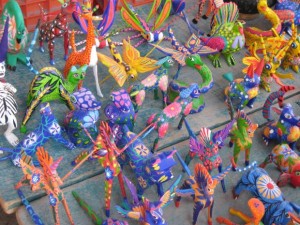 The crafts in this city are the result of more than 2 billion years of evolution and artistic creativity, in the traditional markets, the tourist can find all kinds of crafts from different regions of the of Oaxaca. The most representatives are the alebrijes, jewelry and black mud. Also the city of Oaxaca is famous for its rich gastronomic tradition, the most popular dish is the Mole, which its taste and color, since there are more than 7 varieties, depends on the ingredients and the number and type of chili used during the preparation. It is said, who comes to Oaxaca and doesn’t eat mole, has never been there. The typical drink of Oaxaca is mezcal, which is obtained from the maguey cactus.
The crafts in this city are the result of more than 2 billion years of evolution and artistic creativity, in the traditional markets, the tourist can find all kinds of crafts from different regions of the of Oaxaca. The most representatives are the alebrijes, jewelry and black mud. Also the city of Oaxaca is famous for its rich gastronomic tradition, the most popular dish is the Mole, which its taste and color, since there are more than 7 varieties, depends on the ingredients and the number and type of chili used during the preparation. It is said, who comes to Oaxaca and doesn’t eat mole, has never been there. The typical drink of Oaxaca is mezcal, which is obtained from the maguey cactus.
